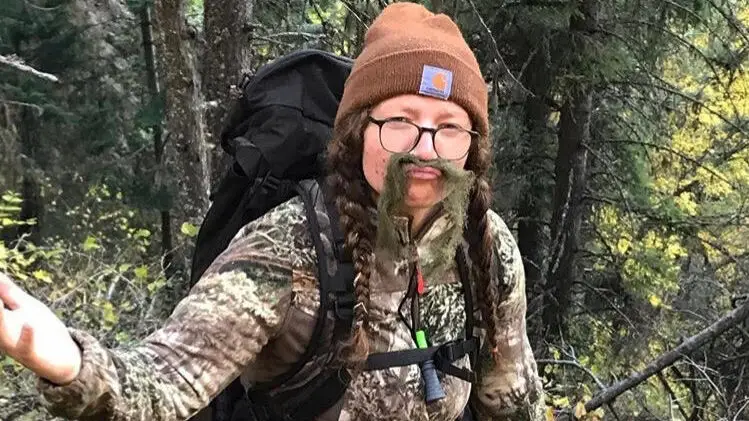Welcome to the second installment of K-Bear’s Korner!
How often do you think about lichen? Once a day? Five times a day? I bet you rarely think about lichen, let alone how many kinds of lichen we have in North Idaho. During an experiential activity we call, “Explorers Stop!”, students use inquiry-based methods and practices to explore their wildlands and identify local flora and fauna. This includes identifying our local trees and other living organisms like lichen.
You might be wondering, what is lichen?
One way we get our students to remember what lichen consists of is by sharing the following funny ecological joke: “Amanda the alga took a LICHEN to Frank the fungus.” Get it? In short, alga and fungus have a symbiotic relationship in this capacity, essentially the fungus serves as the “house” and the alga serves as the “food”.
There are about 3,600 different types of lichen in North American. Lichen is considered a bio-indicator by scientists because of their uncanny ability to absorb particulate matter in their atmosphere as well as their sensitivity to particulate matter like pollutants. As a result, lichen can provide valuable information about the environs around us. In fact, lichen is often used by scientists to identify good air quality. You can learn more about lichen via this United States Forest Service webpage.
Lichen’s are divided into three main groups, which are:

Foliose Lichen
Leaf-like.
This type of lichen often has a “top-side” and “bottom-side” to these lichens. Think of something that looks like good-ole leaf lettuce.

Fruticose Lichen
Shrub or hair-like.
Common examples in North Idaho are the poisonous Wolf Lichen (Letharia vulpina) that Native Americans would dip their arrowheads in, as well as the common Fruticose Lichens “Old Mans Beard” or “Witches Hair”.

Crustose Lichen
Paint or stain-like.
Just like their name implies these types of lichens form as a crusts over another surface, like a boulder, the soil, or even man-made structures or items. Often showing up in bright colors including yellow, red, and orange they can also occur in grays and greens.
Photo Courtesy of Naturally North Idaho
Anyway, to wrap up, algae and fungus create lichen and I bet you’ll think about lichen a bit more after reading this blog entry. Don’t worry folks, there’s more to LICHEN where this came from. I grew the monstrosity lichen mustache shown in the featured photo while searching for a hunting trail last elk season — yes, it took us THAT long to find it…

Leslie Kiebert
SOLE Intern | Field Instructor





